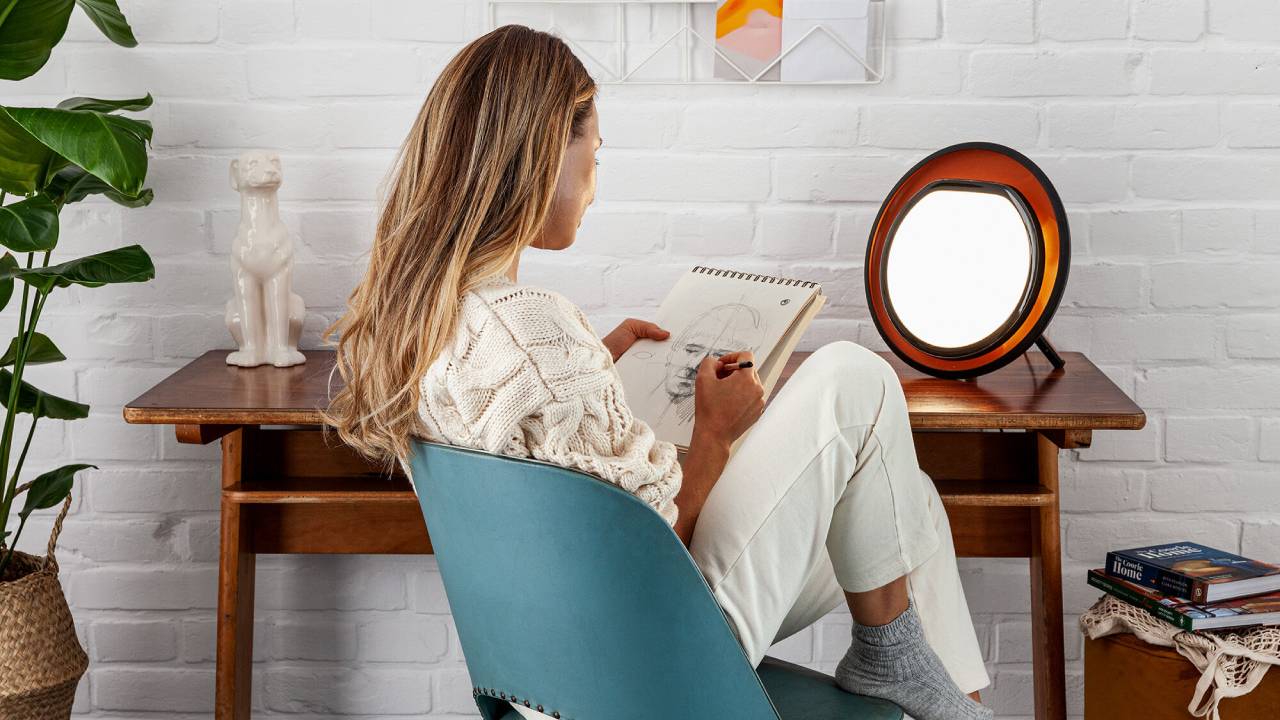3 ways to combat SAD beyond light therapy, according to brain experts
Neurotherapists give tips on how to combat SAD beyond light therapy


As the days get darker and shorter, many people will experience SAD or seasonal affective disorder. SAD is a form of depression with a seasonal pattern, which tends to start in autumn, peak during winter and ease in spring. While the cause of SAD isn’t fully understood, many sources have suggested it's connected to the lack of sunlight at this time of year, which can affect the body’s production of melatonin and serotonin.
People who feel the effects of SAD tend to experience symptoms like reduced energy levels, feelings of stress, anxiety and despair, difficulty concentrating, becoming less sociable and much more (see signs you might be suffering from SAD for more details). A popular and recommended way to combat these SAD symptoms is by investing in a SAD lamp.
The best SAD lamps are light therapy devices that are commonly used during autumn and winter to simulate sunlight. They’re designed to help boost your energy levels, keep you alert and take better control of your SAD symptoms. But SAD lamps aren’t for everyone.
If you don’t own a SAD lamp or feel it’s not working for you, I spoke to neurotherapists from Brainworks Neurotherapy to find out other ways to combat SAD symptoms beyond light therapy. The three tips below are said to “simultaneously address mood, sleep, physical health and lifestyle factors to mitigate the impact of SAD symptoms.”
1. Strategic Sunlight Exposure
Rather than using a SAD lamp or the best wake up lights to get up in the morning, brain health experts suggest to “make it a point to step outside for 10-15 minutes every day before 12. To maximise the benefits of this exercise, position yourself to face east, as this aligns you with the direction of the morning sun. It's also important to repeat this practice in the evening, during sunset. This time, you should face west as the sun sets in that direction.”
Exposure to natural light and in a specific timeframe is essential for supporting your hormonal system, according to Brainworks Neurotherapy. The amount of light that enters your eyes “directly influences the production and regulation of hormones in your body, such as serotonin, melatonin and cortisol, which play a critical role in mood and sleep patterns.”

2. Grounding
Grounding or earthing is currently having a big moment on social media. It’s a practice that involves physically connecting with the earth’s surface to absorb its natural electrical charge. Research around grounding indicates that it can manage stress levels, improve sleep patterns and reduce inflammation.
Get all the latest news, reviews, deals and buying guides on gorgeous tech, home and active products from the T3 experts
To practice grounding, Brainworks Neurotherapy recommends to “locate a patch of grass, sand, or even mud, and let your bare skin make contact with the natural earth. You can either walk or stand barefoot on the ground to experience its benefits. Aim to spend at least 20 minutes every day practicing this to see the benefits.” Grounding can even be done when it gets cold – just remember to wrap up warm!
3. Bedtime routine
Having a bedtime routine makes a world of difference to your health and wellbeing. Sticking to a nightly schedule helps your body and mind get ready for sleep and wind down properly, leading to better sleep quality and quantity at night. Brainworks Neurotherapy also says that a fixed bedtime routine can help combat SAD symptoms.
“Set a fixed bedtime every night, and as the clock ticks, put away your phone, turn off the lights, and gently close your eyes,” says brain health experts. Going to bed at the same time every day offers multiple benefits like regulating your circadian rhythm, managing stress and stabilising the production of crucial hormones. “Such regularity not only contributes to improved sleep quality but also plays a vital role in stabilising mood and promoting better mental health.”
For more advice, check out these 5 soothing sleep tips for SAD sufferers.

Beth is Home Editor for T3, looking after style, living and wellness. From the comfiest mattresses to strange things you can cook in an air fryer, Beth covers sleep, smart home, coffee machines, watches, grooming tools, fragrances, gardening and more.
In her spare time, Beth enjoys running, reading, baking and attempting craft projects that will probably end in disaster!